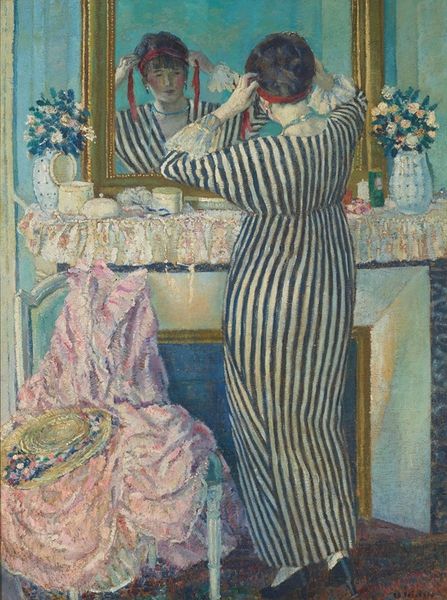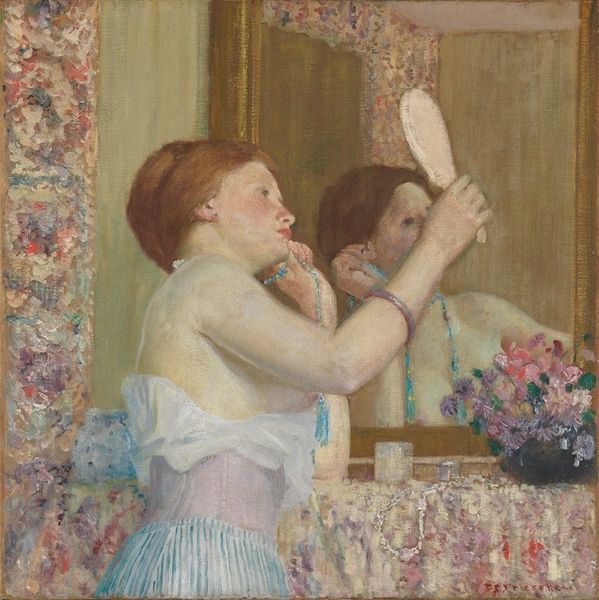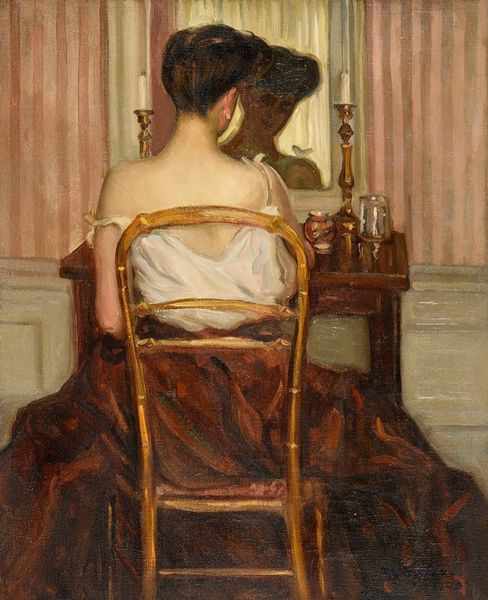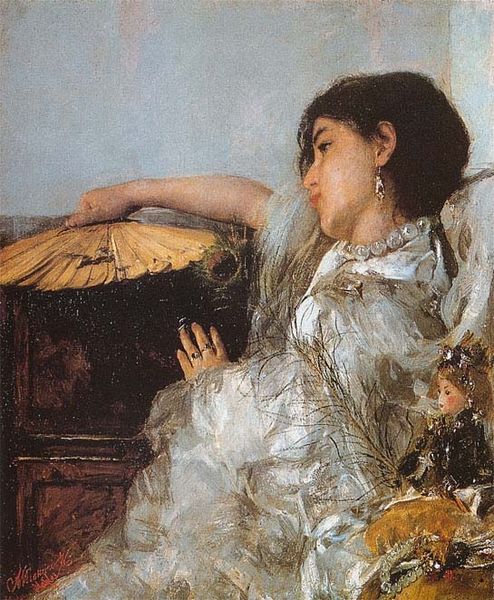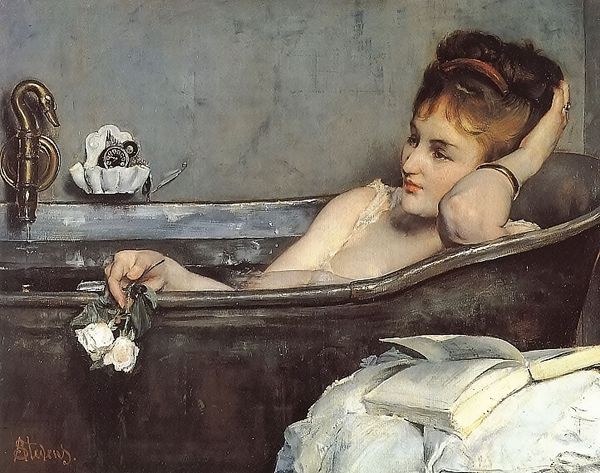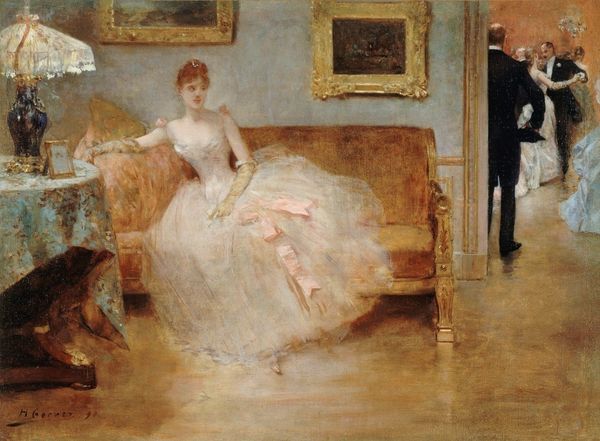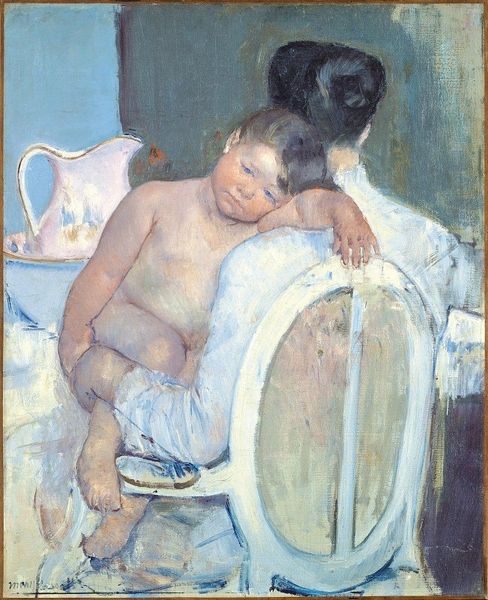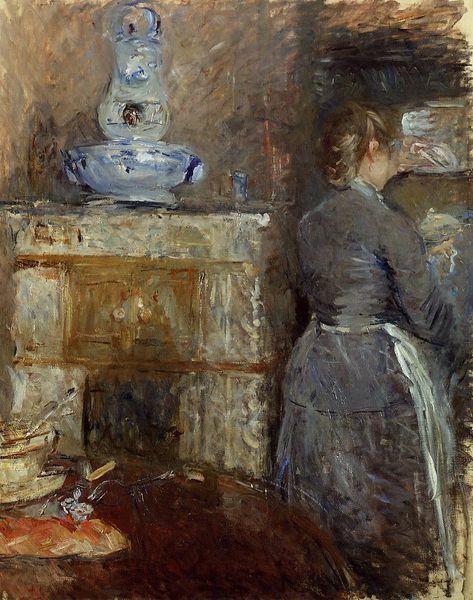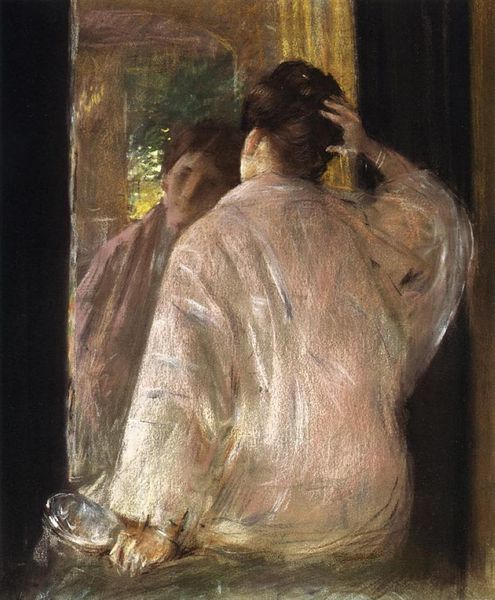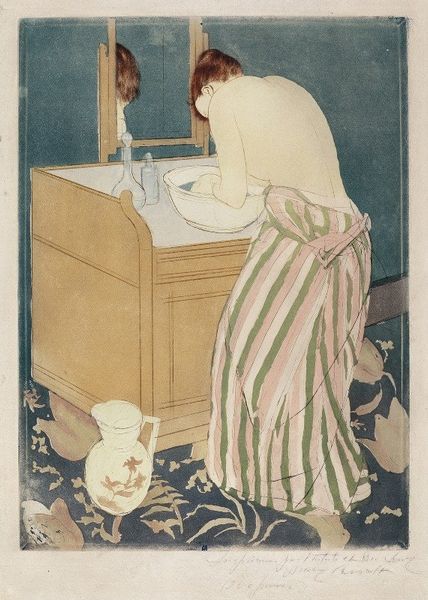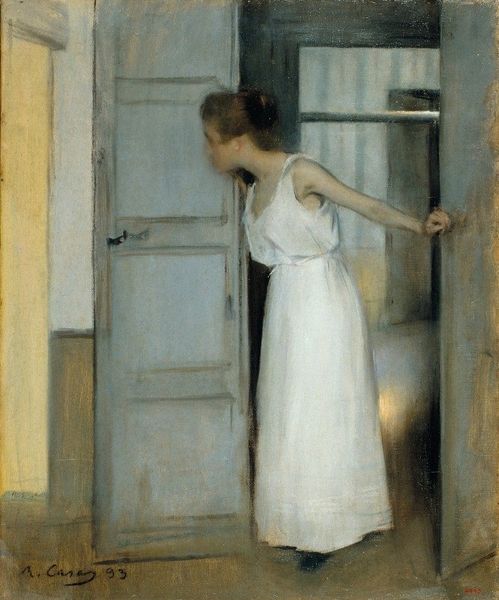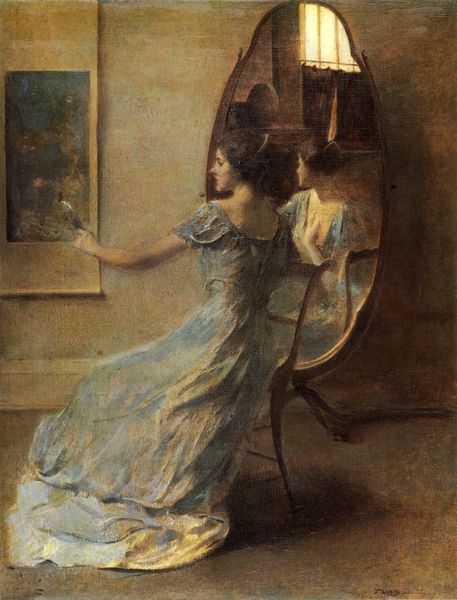
painting, oil-paint
#
portrait
#
painting
#
impressionism
#
oil-paint
#
figuration
#
genre-painting
Dimensions: 65 x 81 cm
Copyright: Public domain
Editor: "Woman at a Dressing Table," painted by Gustave Caillebotte in 1873. It feels very intimate, almost voyeuristic, catching a private moment. What do you see in this piece? Curator: Well, the mirror is the key for me. Throughout history, the mirror has held tremendous symbolic weight. Think about the concept of *speculum*, a way of looking, seeing, and contemplating. The mirror allows the woman to become both subject and object, observer and observed. This duality is at the heart of female identity throughout art history, don't you think? Editor: That's interesting. I hadn't thought about the mirror beyond just its literal use in getting dressed. So, are you suggesting the painting is about self-awareness? Curator: Perhaps more than that. The image in the mirror is distorted by time. This reflection isn't quite *her*; it is *herself* constructed through external forces—societal expectations. Caillebotte frames a potent psychological moment; we feel her vulnerability. Do you see the shadow? Editor: Yes, looming towards the right! Curator: The shadow might signify the external world creeping in! What’s your perspective on the objects laid out on the vanity, such as jars, and pitchers? Editor: It reminds me that people of that era would have to put in that time and care to create a particular presence; it also speaks to gender expectations, perhaps the pressure a woman of the time would have felt to present herself in a certain way. Curator: Precisely! And what does it suggest about those fleeting Impressionistic moments? By showing such intimate actions, artists invite viewers into complex layers beyond appearance—revisiting themes like interiority, gender performance, and evolving identity from an array of personal objects. Editor: I’m looking at Impressionism in a whole new way. Thanks!
Comments
No comments
Be the first to comment and join the conversation on the ultimate creative platform.

